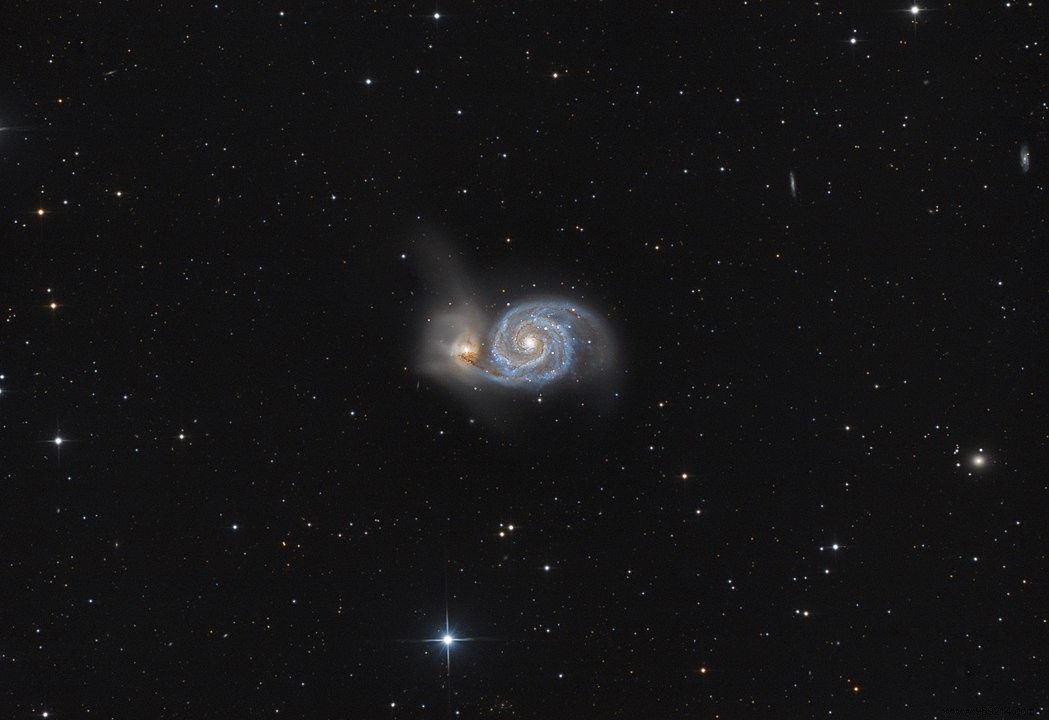A team of astronomers announces that they have unearthed the very first candidate exoplanet in another galaxy. This potential world, which has not yet been confirmed, would evolve in a binary system 23 million light years from Earth.
Since the detection of the first exoplanet in 1995 by astronomers Michel Mayor and Didier Queloz (of the Geneva Observatory), we have identified more than 4,200 new worlds, all isolated in the Milky Way. However, there could be many more. According to some estimates, there are even more planets than stars in our galaxy.
So it's easy to imagine that these objects are also common in other galaxies. Being able to spot them will be very complicated, however, as the distances between galaxies are enormous. Nevertheless, we could determine their presence by indirect means. In fact, one of them may well have been discovered.
Rosanne Di Stefano and her team at the Harvard-Smithsonian Center for Astrophysics claim to have isolated a potential world in the galaxy M51, also known as the Tourbillon galaxy. You will find it 23 million light-years away of Earth, in the Constellation of the Hounds.
This possible exoplanet, dubbed M51-ULS-1b, would fit into a binary system composed of a neutron star (or a black hole) devouring a massive star located nearby.
This action of cannibalism is obviously not without consequences. When it falls into a black hole or a neutron star, the accelerated matter indeed emits X-rays (friction of the gas which becomes very hot). This system presents itself, moreover, as one of the brightest sources of X-rays in the entire galaxy .
That said, the black hole or neutron star responsible for these X-rays is not very large according to the researchers. This means that a Saturn-sized planet , positioned about a billion kilometers away, could then completely eclipse this X-ray source, from our perspective, if it transited in line of sight with Earth.
September 20, 2012 , which is exactly what seems to have happened. And the Chandra X-ray Observatory didn't miss a thing.
For a short period of three hours, this X-ray source did indeed fade, fade, and then reappear. At the time, no researcher had noticed this "eclipse", because Chandra datasets are not analyzed for such short variations in brightness .

Several hypotheses could explain this phenomenon. The presence of another small star, such as a white dwarf, could for example easily eclipse the X-ray source. However, Rosanne Di Stefano refutes this idea, pointing out that the binary system here is too young for a such an object has had time to evolve nearby .
Another potential explanation suggests a momentary interruption in the fall of stellar material swallowed by the black hole or neutron star. Again, Di Stefano and his team are perplexed. According to them, in such a case, the variation in brightness would not have been the same, with "higher energy light frequencies changing faster than lower energy ones and reigniting in a different way “.
Now, in this specific case, all the light frequencies faded and reappeared at the same time, which further supports the idea of an eclipse. For the researchers, the hypothesis of the exoplanet in transit in front of the light source therefore remains the most credible . The hardest part will now be to prove it definitively.
In addition, Di Stefano and his colleagues also suggest that other extragalactic exoplanets will likely be unearthed soon. The team only scanned a portion of Chandra's x-ray data. "These archives contain enough data to conduct surveys comparable to ours more than ten times “, she explains. “Also we anticipate the upcoming discovery of more than a dozen additional extragalactic candidate planets in wide orbits “.